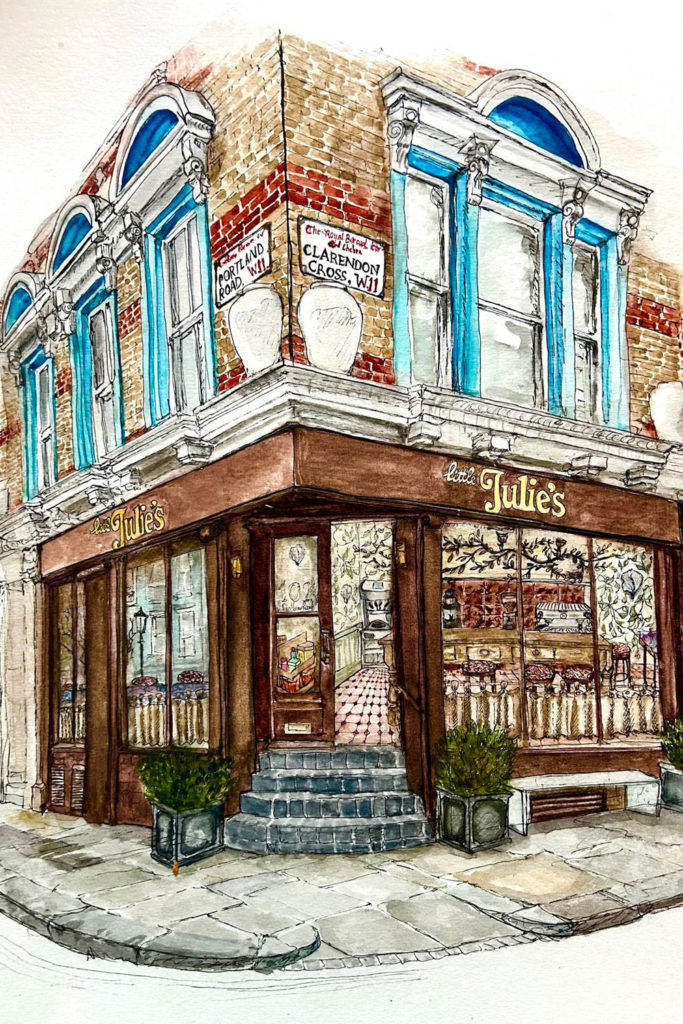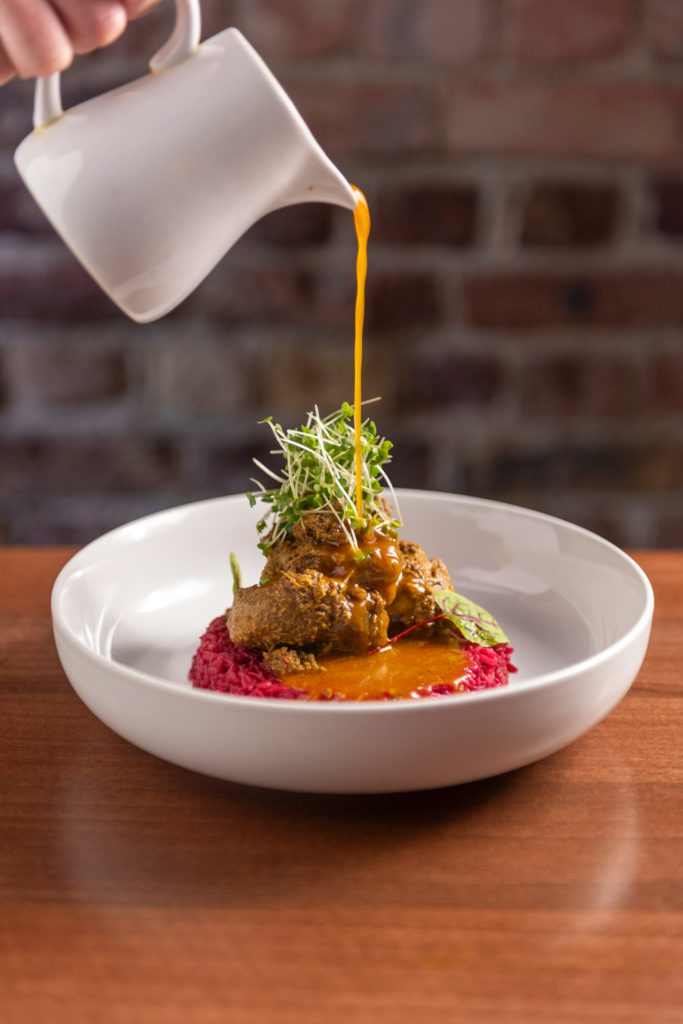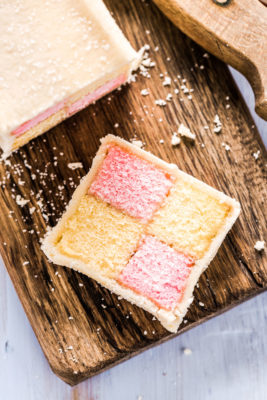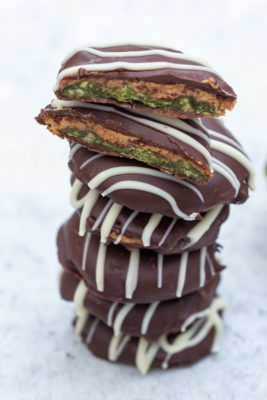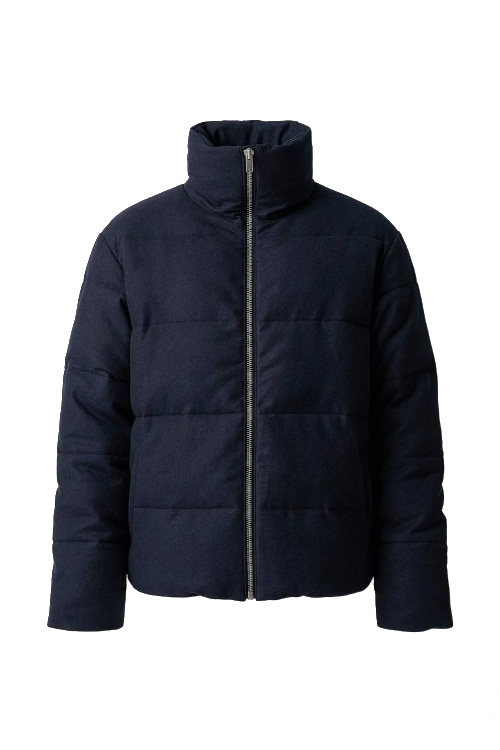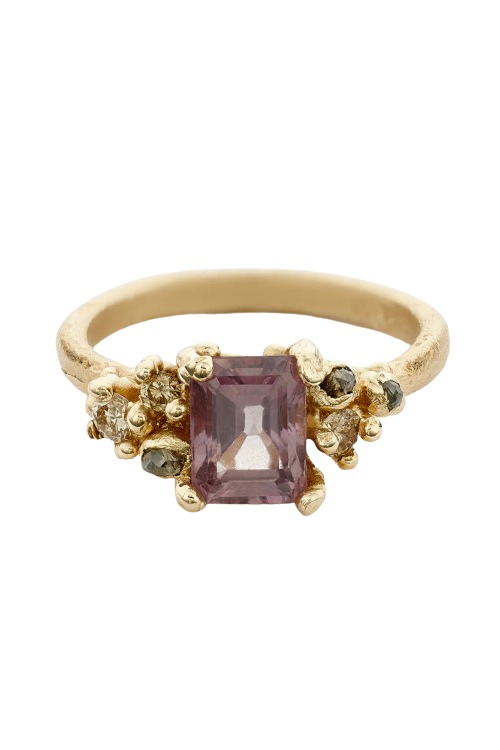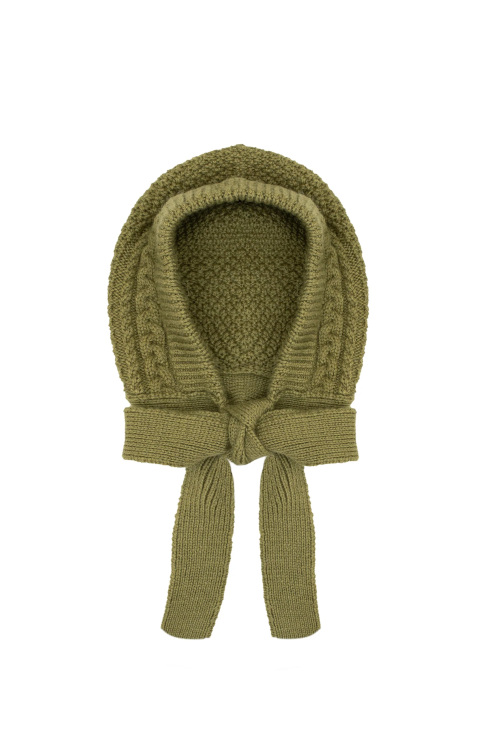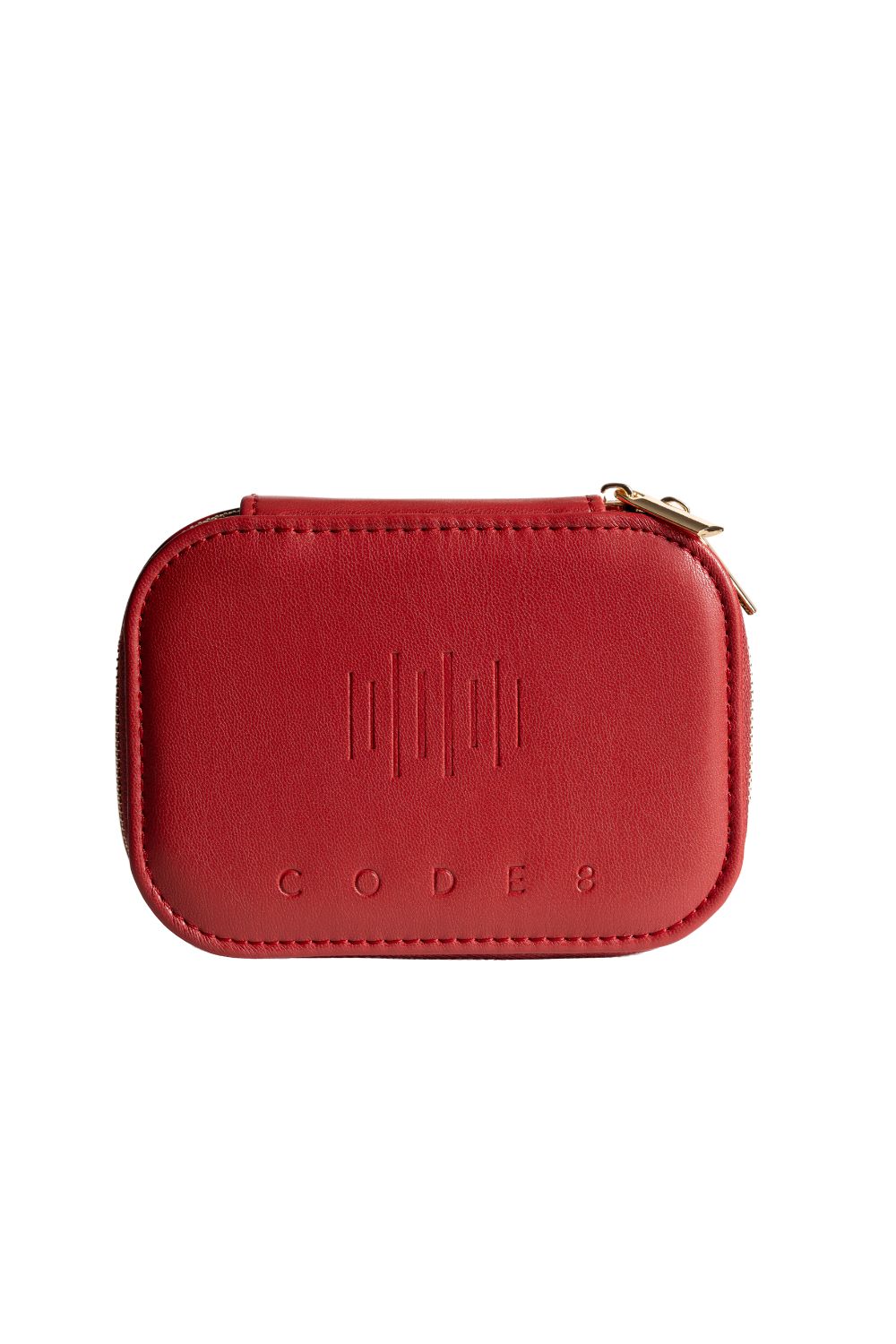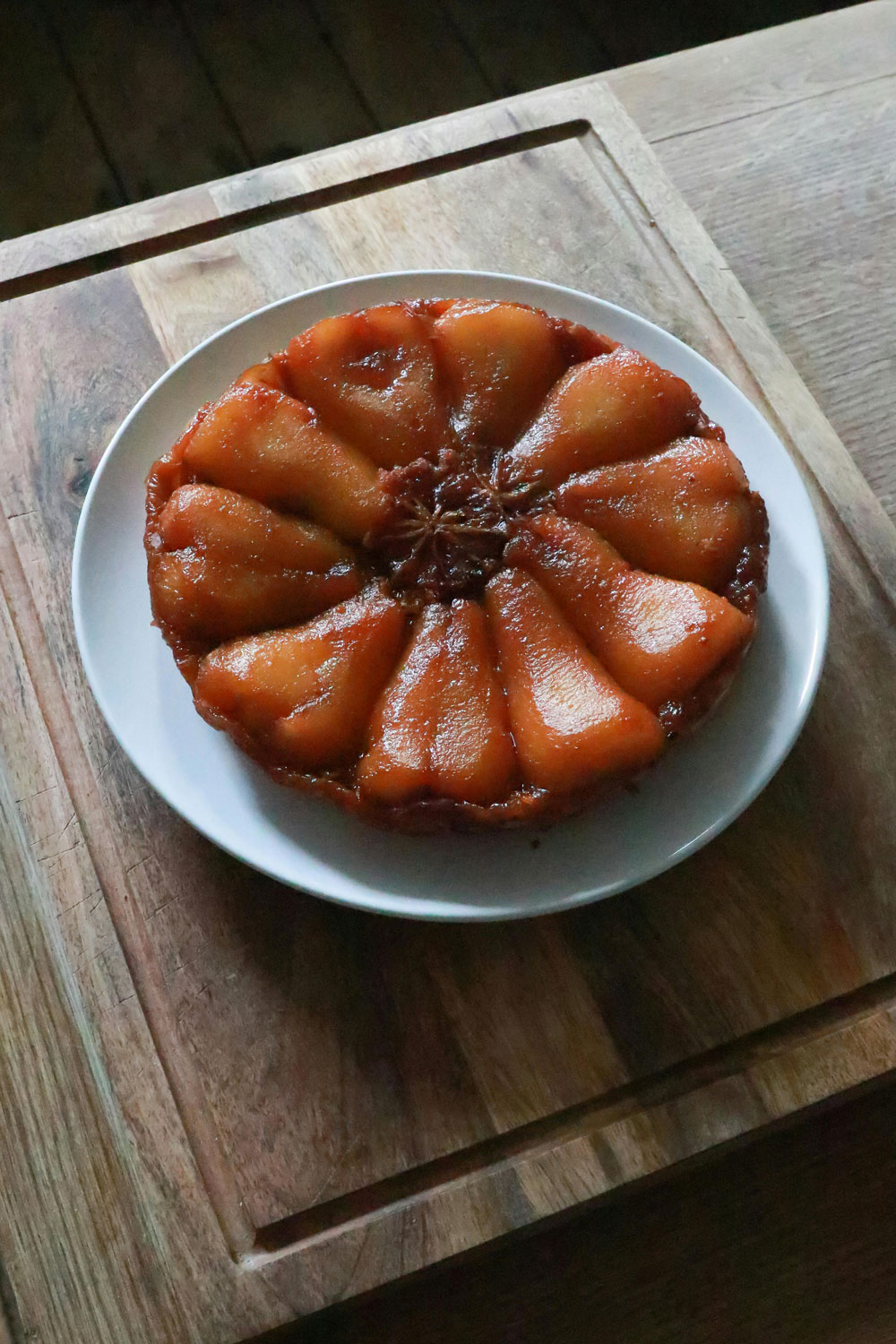
Bake Off Recipe: Prue Leith’s Pear Tarte Tatin
By
1 year ago
Have a go at this week's technical challenge
Last night’s episode of Bake Off was all about caramel – a notoriously tricky one to master. After trying their hand at whizzing up some caramel biscuits, it was time for the contestants to get stuck into the technical challenge: a pear tarte tatin set by Prue Leith. This was a particularly hard one to nail: the bakers not only had to get the pastry and the caramel right, but also create a homemade walnut praline ice cream. Think you’ve got what it takes? Have a go at the recipe yourself at home.
Great British Bake Off Technical Challenge No. 4: Pear Tarte Tatin
‘Sticky caramel and buttery rough puff pastry with the floral sweetness of perfectly ripe pears. Enjoy the adulation when you turn out a perfect tatin in front of your guests! We’re serving it with homemade vanilla ice cream, dotted with walnut praline, for extra scoops of comfort.’
Ingredients:
For the ice cream
- 600ml whole milk
- 150ml double cream
- 1 vanilla pod, split lengthways and seeds scraped
- 9 large egg yolks
- 150g caster sugar
For the cheat’s rough puff
- 200g plain flour
- Pinch of salt
- 35g unsalted butter, cut into cubes and chilled
- 5-7 tbsp ice-cold water
- 80g unsalted butter, frozen
For the walnut praline
- 75g walnut halves or pieces
- 125g caster sugar
- Large pinch of sea salt
For the tart
- 125g caster sugar
- 50g unsalted butter, cut into cubes
- 4 firm but ripe pears, peeled, halved and cored
Equipment
- Cooking thermometer (optional)
- Baking sheet lined with a silicone mat
- Ice-cream machine
- 25cm heavy-based ovenproof frying pan or tart tatin dish
Method:
- Make the ice cream. Start by making a crème anglaise. Heat the milk, cream and vanilla seeds in a saucepan over a medium heat to just below boiling point. Remove from the heat and leave to stand.
- In a large bowl, using an electric hand whisk, whisk the egg yolks and caster sugar until thick and pale, and the mixture leaves a ribbon trail when you lift the whisk. Pour in the warmed milk mixture, whisking continuously. Return the mixture to the pan and cook over a very low heat for 3-4 minutes, whisking continuously, until smooth and thick enough to coat the back of a spoon. The temperature should read 83°C/181°F on a cooking thermometer when the crème anglaise is ready. Remove the pan from the heat and pass the crème anglaise through a sieve into a clean bowl, then place the bowl in an ice bath and leave to cool.
- Make the cheat’s rough puff. Mix the flour and salt together in a mixing bowl. Using your fingertips, rub in the chilled butter until the mixture resembles fine breadcrumbs. Gradually mix in the ice-cold water ─ using just enough for the mixture to come together in a ball of dough.
- Roll out the dough on a lightly floured work surface into a 30 x 10cm rectangle. With one of the short ends nearest to you, coarsely grate half of the frozen butter over the bottom two-thirds of the dough. Fold down the top third and fold up the bottom third as if folding a letter. Turn the folded dough through 90° and roll it out into a rectangle the same size as before. Repeat this process, adding the remaining frozen butter and folding as before. Place the dough in an airtight container and leave to rest in the fridge for up to 30 minutes.
- Repeat this rolling and folding process twice more, without adding butter, chilling the pastry between each turn.
- Heat the oven to 200°C/180°C fan/400°F/Gas 6.
- Make the walnut praline. While the pastry is chilling, spread out the walnuts on a baking sheet and toast them in the oven for 8-10 minutes, until dark golden. Remove from the oven and set aside.
- Meanwhile, heat the caster sugar in a saucepan over a medium heat until the sugar melts to a golden caramel, swirling the pan from time to time. Add the walnuts to the pan and swirl them around to coat them in the syrup, then pour the praline onto one half of the baking sheet lined with the silicone mat. Sprinkle with sea salt. Fold the other half of the silicone mat over the walnut praline while it is still warm, then, with a rolling pin, roll out the praline flat. Leave the praline to cool and set hard, then peel off the mat and roughly chop the praline into small (but not fine) pieces.
- Finish the ice cream. Pour the crème anglaise into an ice-cream machine and churn for 20-25 minutes, until it is soft set. Just before the ice cream is ready, add the walnut praline. Scrape the ice cream into an ice cream container and freeze until firm.
- Make the tart. Tip the sugar into the frying pan or tatin dish and place it over a medium heat. Cook until the sugar melts to a golden caramel, swirling from time to time.
- Add the butter to the pan, stirring until combined. Add the pear halves and spoon the buttery caramel over the pears. Reduce the heat and simmer for 5 minutes, until the pears are tender but retain their shape. Remove the pan from the heat, then lift the pears out of the pan onto a plate lined with kitchen paper. Leave to cool slightly.
- Carefully pour most of the caramel into a heatproof jug, leaving just a thin layer on the base of the pan. Arrange the pears cut-side up with their pointy ends meeting in the middle of the pan.
- Roll out the pastry on a lightly floured work surface to about 5mm thick. Cut out a disc slightly larger than the frying pan or tatin dish. Roll the pastry onto your rolling pin, then unroll it over the pears to cover evenly. Carefully tuck the edges of the pastry into the sides of the pan and prick the surface with a fork. Bake for 35-40 minutes, until the pastry is puffed up and golden, and the caramel is bubbling around the sides.
- Remove the tatin from the oven and leave it to cool for 5 minutes. Meanwhile, reheat the reserved caramel. Carefully invert the tart onto a serving plate and spoon over the warmed reserved caramel. Serve cut into slices with scoops of the ice cream.
Recipe from thegreatbritishbakeoff.co.uk

